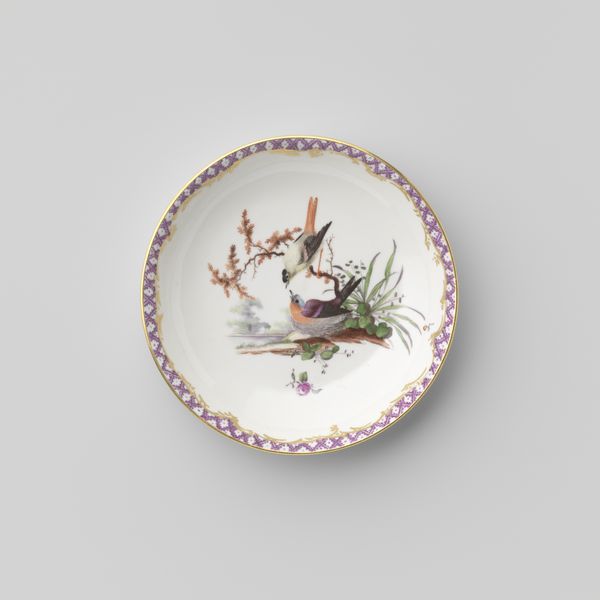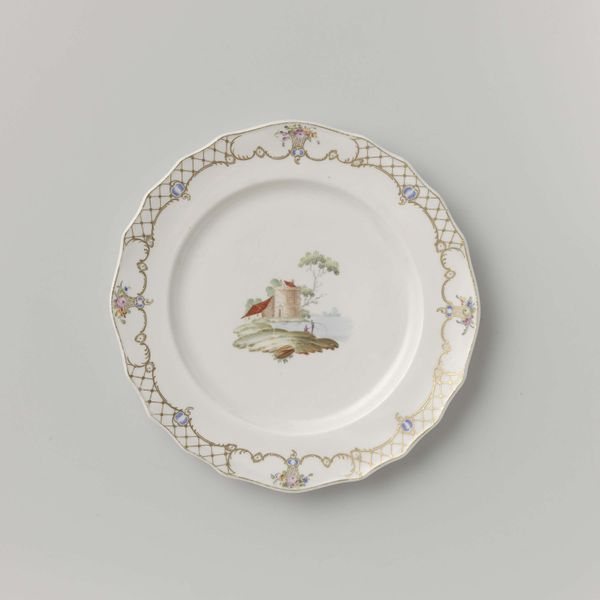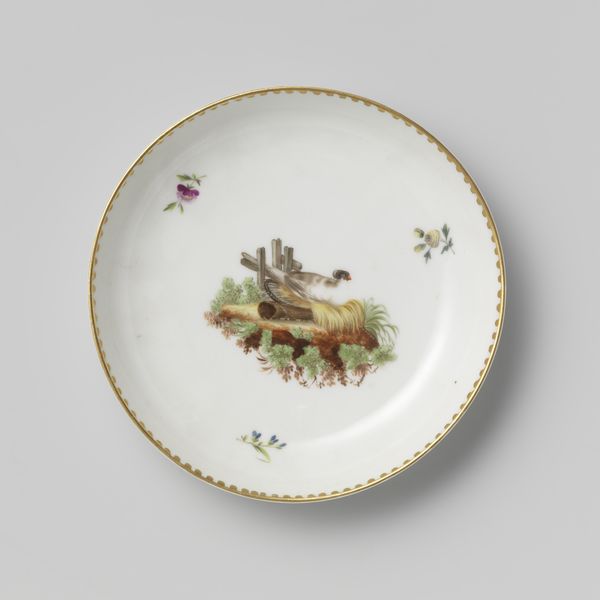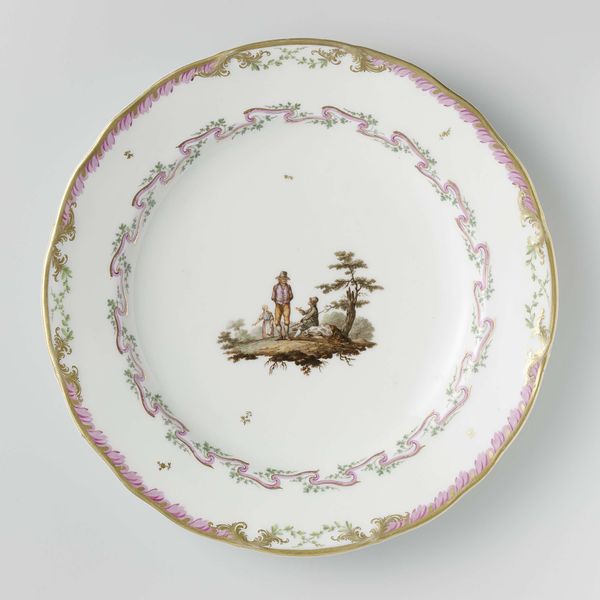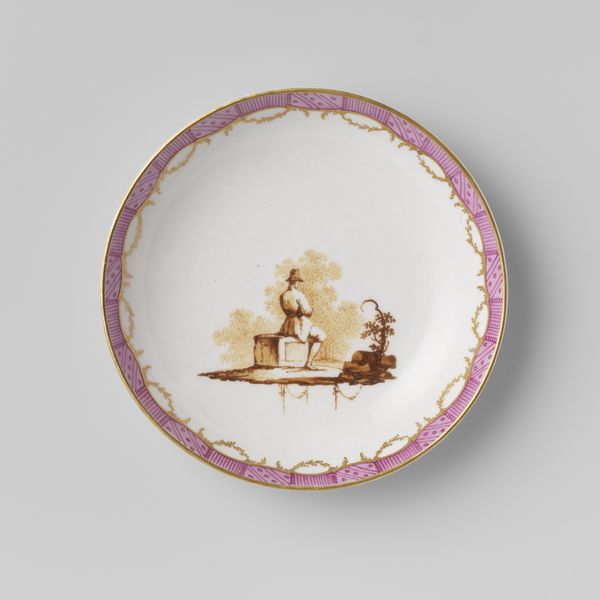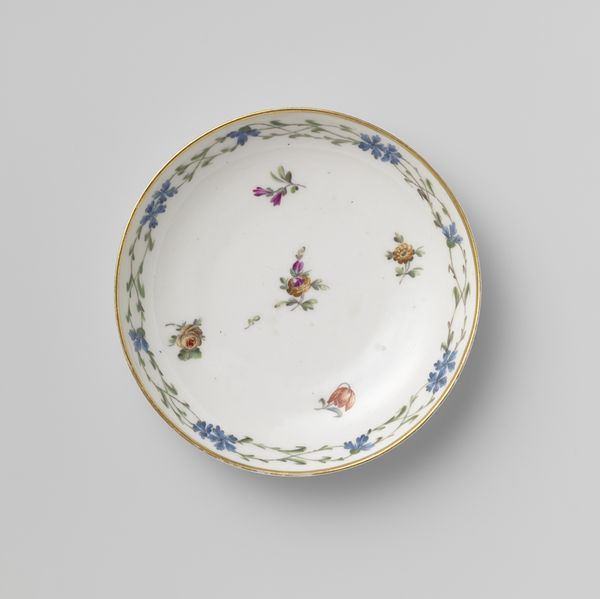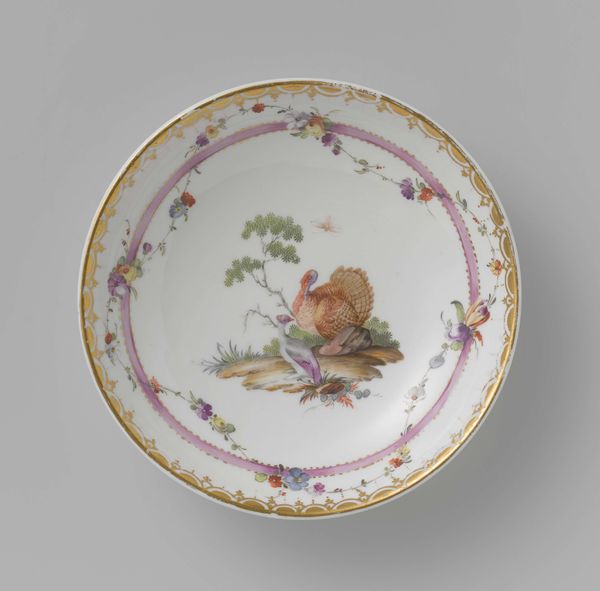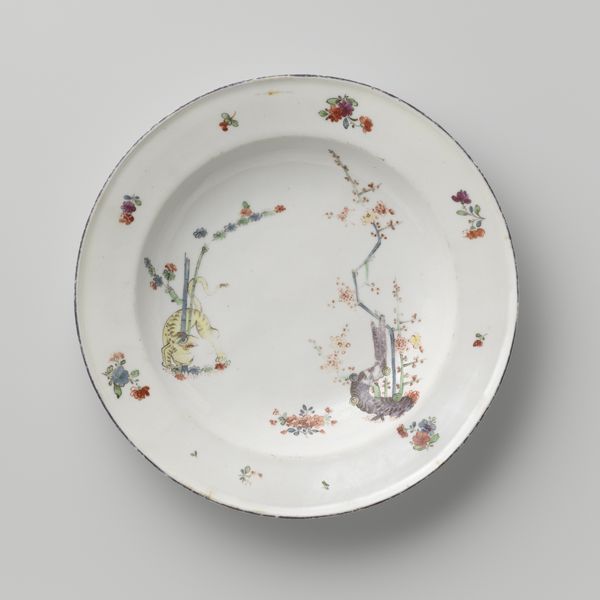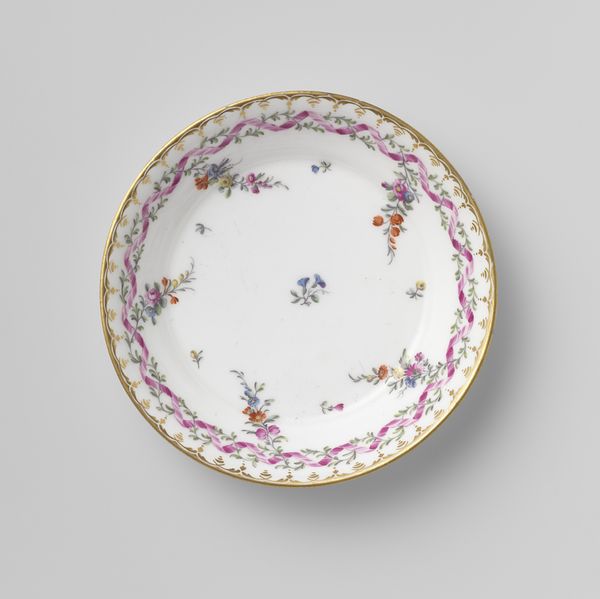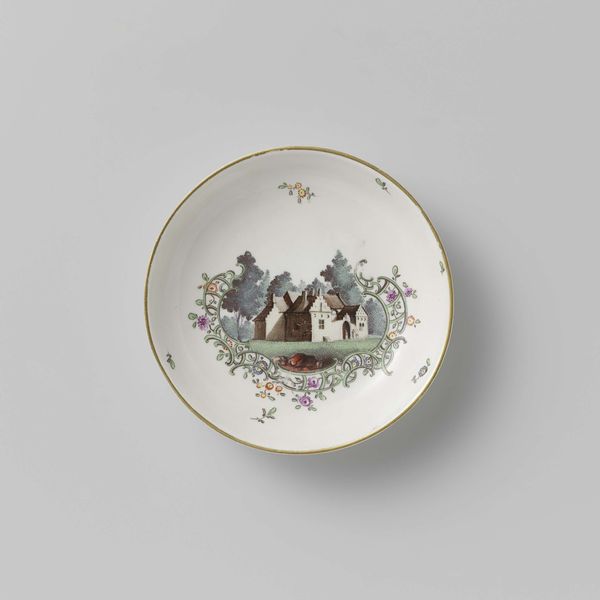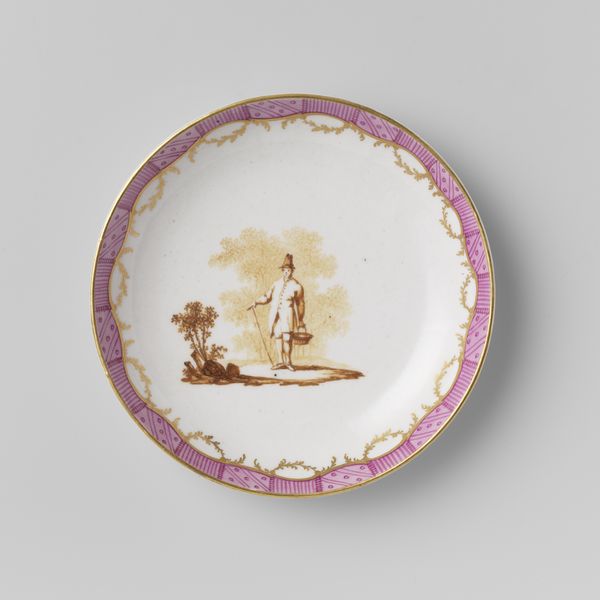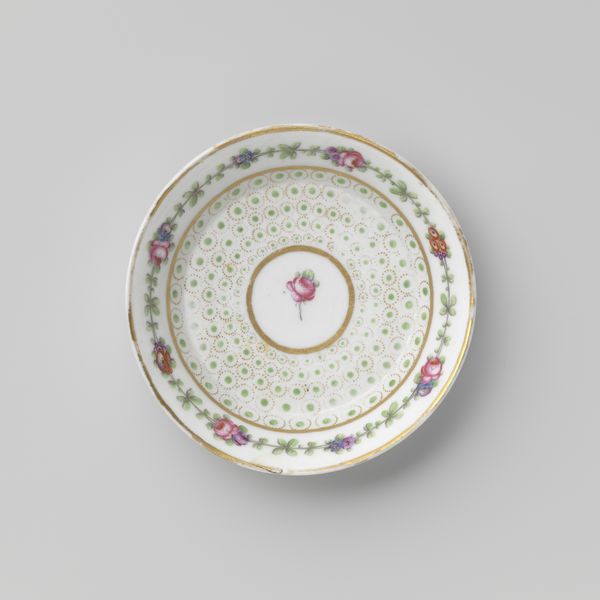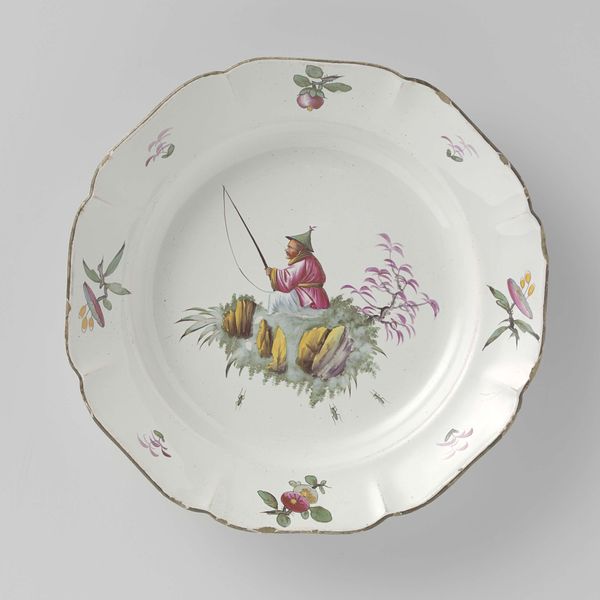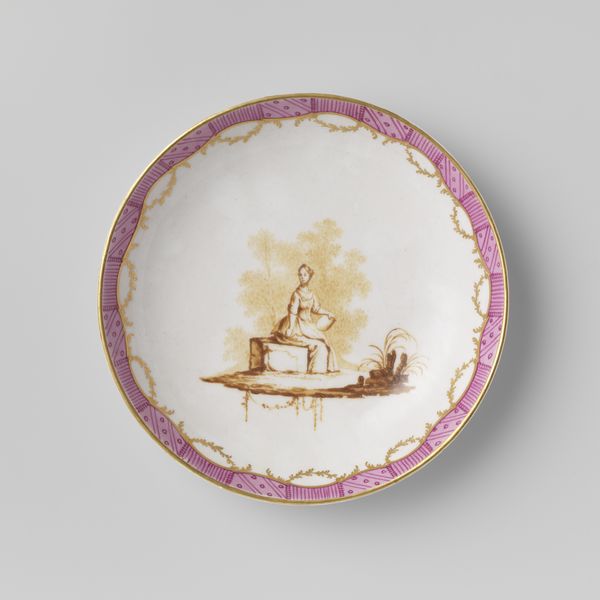
painting, porcelain
#
painting
#
landscape
#
porcelain
#
orientalism
#
miniature
#
rococo
Dimensions: height 2.5 cm, diameter 11.6 cm, diameter 7.4 cm
Copyright: Rijks Museum: Open Domain
Editor: This gorgeous porcelain saucer, “Saucer with birds in a landscape,” from around 1765 reflects the Rococo style. I find the miniature scene on it so delicate! What catches your eye about it? Curator: The first thing I notice is the porcelain itself and how it was produced. Consider the labour involved, from mining the clay to the decoration and firing processes. Where were these materials sourced, and by whom were they transformed into this delicate object? Editor: I see! So, it's about understanding the broader system behind this seemingly simple object? Curator: Exactly! Think about Ansbach porcelain and its cultural context. Its imitation of East Asian designs tells us a lot about 18th-century European consumption habits and fantasies of the "Orient". It's less about the artist’s individual genius and more about understanding cultural exchange through traded commodities. Editor: It’s fascinating how the saucer, just by existing, reflects larger cultural and economic exchanges, but is it "high art" when it's also functional? Curator: That’s a great question. Materialist art history challenges these traditional boundaries. We must scrutinize who gets to define 'art' and how that definition is connected to class, labor, and power structures within a market-driven economy. How does elevating painting over porcelain art perpetuate particular values? Editor: That's really made me think. I used to look at art in isolation, focusing on the individual artist’s vision, but I realize there is more to it! It's more interesting now, after thinking about where things come from, and who made it. Curator: Precisely! Considering the whole history of its production, from materials to labor and cultural consumption, transforms the object.
Comments
No comments
Be the first to comment and join the conversation on the ultimate creative platform.
